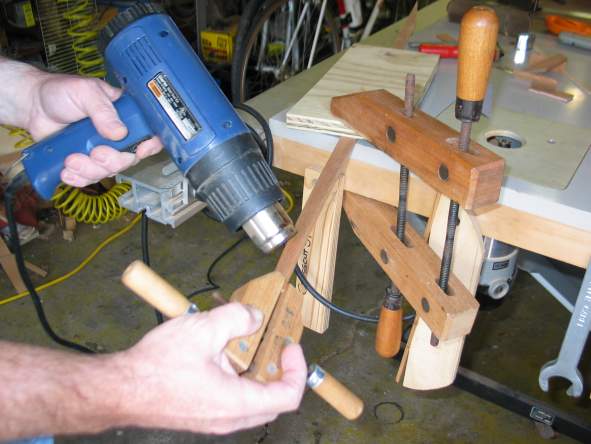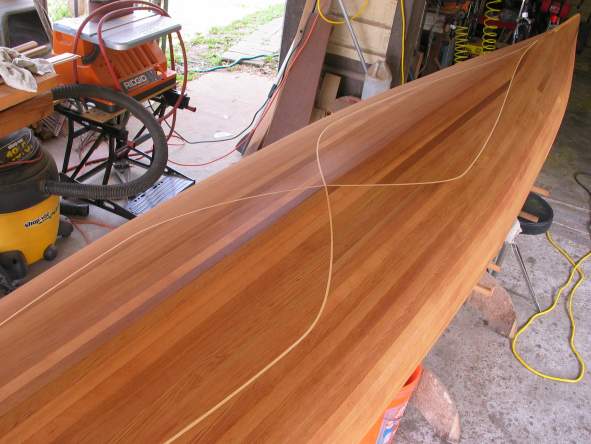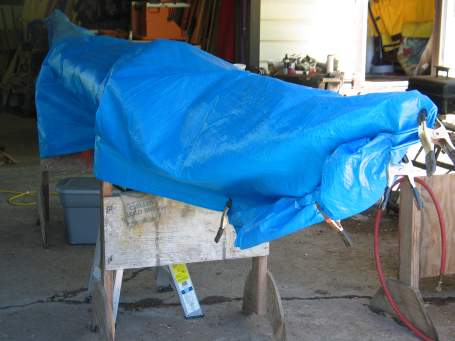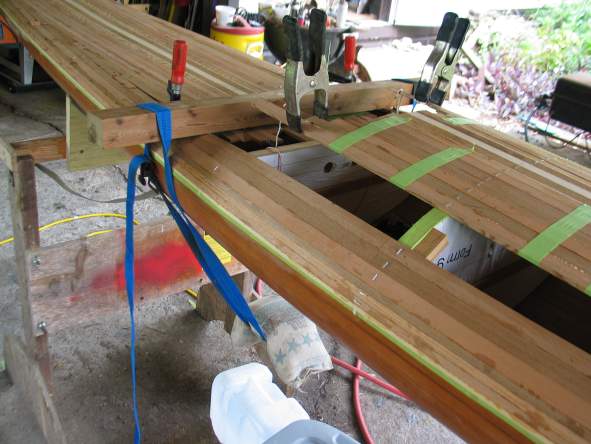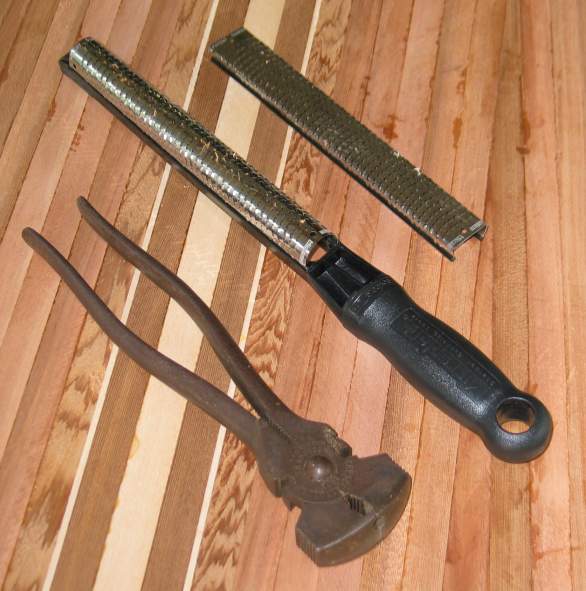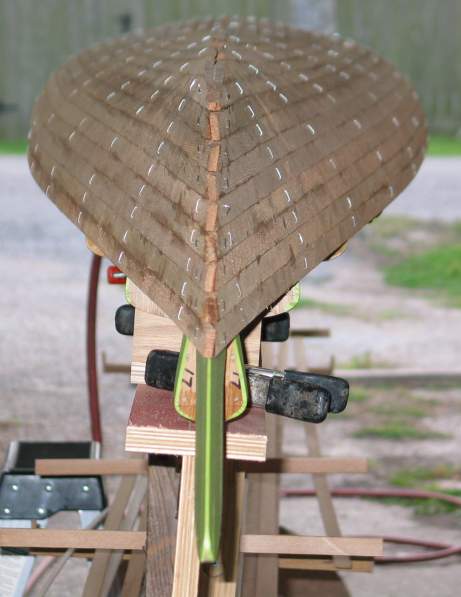
The first time I built the Outer Island, I managed these sorts of strip situations the old-fashioned way: with brute force and lots of staples and nails. To this day I can remember getting those strips installed only with a certain amount of trauma. In short, it was neither relaxing, nor fun to do.
This time around it is actually both fun and relaxing. The heat gun made all the difference. With it, you can introduce the required twists into a strip and freeze them there so that the strip lays docilely in place as if it were born for the job.
Heat guns look a lot like hair driers, but you really don't want to get them mixed up. Hair driers blow nice warm air, and heat guns deliver red hot air that literally toasts wood surfaces when working particularly stubborn bends or twists. No joke, they run very hot indeed, so be careful where you set 'em down, too.
